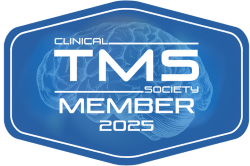
It’s normal to feel sad, disinterested, or even glum from time to time. But when these feelings are intense, overwhelming, and linger on for weeks or even months, they signal something more serious – depression.
Depression is a mood disorder that affects your moods, thoughts, and body. When you have depression, you might notice that you lose interest in things you once enjoyed. Or you always feel exhausted, even after a good night’s sleep. Depression can make you feel hopeless as if there’s a heavy weight on your shoulders that you just can’t shake off.
It’s fairly common. Recent data from the CDC estimates that 1 in 5 adults in the US (18.4%) have been diagnosed with depression in their lifetime. The report also shows that this percentage varies from state to state, with some, like Hawaii, having 12.7%, while West Virginia has 27.5%.
Depression is a serious medical condition that can get worse without proper treatment. If you or someone you love has depression, it’s best to seek medical help. Your caregiver will run some assessments and recommend the best treatment to help you regain control of your life.
Types of Depression
Depression comes in several types and forms, each with unique signs and challenges. Clinical depression, or major depressive disorder (often referred to as depression), is one of the most common and severe forms of depression. Other types include persistent depressive disorder, seasonal affective disorder, prenatal and postpartum depression, treatment-resistant depression, anxious depression and atypical depression. People with bipolar disorder also experience depression episodes in addition to hypomanic and manic episodes.
What Causes Depression?
Depression can happen to anyone, transcending age, race, and socioeconomic status. However, certain factors may increase the likelihood of developing the condition:
- Life events: People who have lived through significant stressors such as abuse, severe losses, or traumatic events are at a higher risk. These experiences can trigger lasting feelings of sadness and hopelessness that characterize depression.
- Gender: Women are statistically more likely to experience depression than men. This disparity may be due to hormonal, biological, social, and cultural factors.
- Genetic and family history: If depression runs in your family, you may be more prone to it. This suggests a genetic component, although not everyone with a family history will develop depression.
- Medical conditions: Conditions like chronic pain or heart disease can increase the risk of developing depression, possibly due to the constant physical and emotional strain these conditions entail.
The Signs and Symptoms of Depression
Depression affects everyone differently, so the symptoms you experience might differ in intensity, frequency, and duration from someone else’s.
If you notice any of the following signs and symptoms of depression most days for at least two weeks, it’s possible you could be dealing with depression:
- Deep sadness or emptiness that sticks around and doesn’t seem to go away.
- No joy in hobbies or activities anymore; you lose the desire to do any of the things you once enjoyed.
- You might eat a lot more or much less – weight changes can be a big indicator.
- You may sleep way too much or not be able to sleep at all.
- You feel exhausted all the time, even when you haven’t done much.
- Sometimes, you might feel down on yourself, harshly criticizing yourself for past faults or feeling guilty about things that aren’t your fault.
- You may have a hard time thinking or making decisions.
- In worst cases, you may feel that life isn’t worth living or think about death a lot.

Treatment Options
Depression is one of the most treatable mental health diagnoses. Between 70 and 90% of people with depression eventually respond well to treatment. Here’s a quick look at the available treatment options:
Therapy
Therapy is often the first line of treatment for depression and anxiety. Cognitive behavioral therapy (CBT) is particularly popular because it helps identify and change negative thought patterns and behaviors that contribute to depression.
Other psychological treatments for depression include behavioral activation, dialectical behavior therapy (DBT), problem-solving therapy, interpersonal psychotherapy, and light therapy. Light therapy involves exposure to doses of white light to regulate mood and is mostly used in treating seasonal affective disorder.
Medication
Antidepressant medications are another common treatment. They work by balancing chemicals in your brain that affect mood and emotions. Common examples include SSRIs like sertraline and fluoxetine and atypical antidepressants such as bupropion and mirtazapine. While effective, these medications can sometimes have side effects, so it’s important to discuss them with your doctor to find the best option.
Advanced Treatments
Advanced treatments like transcranial magnetic stimulation (TMS) and SPRAVATO® (esketamine) offer new hope for those who don’t respond to traditional therapies.
- TMS uses magnetic pulses that induce small electric currents to areas of the brain that influence mood to provide relief and break the cycle of depression. TMS is non-invasive, FDA approved, doesn’t require medication, and is therefore a good alternative for those who may not respond well to traditional drug therapies.
- SPRAVATO® is a nasal spray FDA approved for treatment-resistant depression in adults or to treat depressive symptoms in adults with major depressive disorder (MDD) with suicidal thoughts or actions. It’s often used when other treatments haven’t worked and can provide fast acting relief. Clinical research indicates that it treats symptoms of depression by acting on various neural receptors in the brain.
- Ketamine infusions involve 6 treatments over the course of 2-3 weeks in a medical office under medical supervision. IV ketamine is a great option if someone has bipolar depression.
Lifestyle Changes
Along with treatment, small lifestyle changes can really help with depression. Simple actions like exercising regularly, eating well, and getting enough sleep can help lift your mood. It’s also good to do things you love and keep in touch with friends and family. These positive steps can boost your mental health.

Support Groups
It’s tough to face depression alone. Find groups of people who have been through the same issues as you and connect. Great examples of these groups include the Anxiety and Depression Association of America peer-to-peer support group. The Depression and Bipolar Support Alliance also offers in-person support groups. Such groups offer a valuable network of support, allowing you to discuss challenges and successes in a safe and understanding environment.
Depression can be a temporary or a long-term challenge. If you think you have depression, you need to get help. Your caregiver will run evaluations and recommend the best possible treatment. But in case you still don’t respond to traditional treatment (in the case of treatment resistant depression), then innovative options like SPRAVATO® and TMS can help.
At Relief Mental Health, we offer these advanced therapies along with personalized care for your evolving needs.


